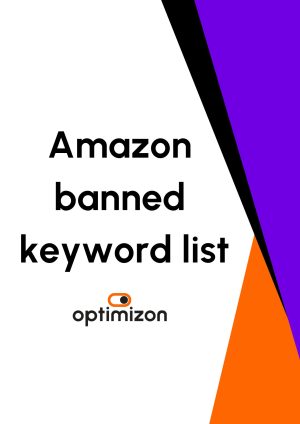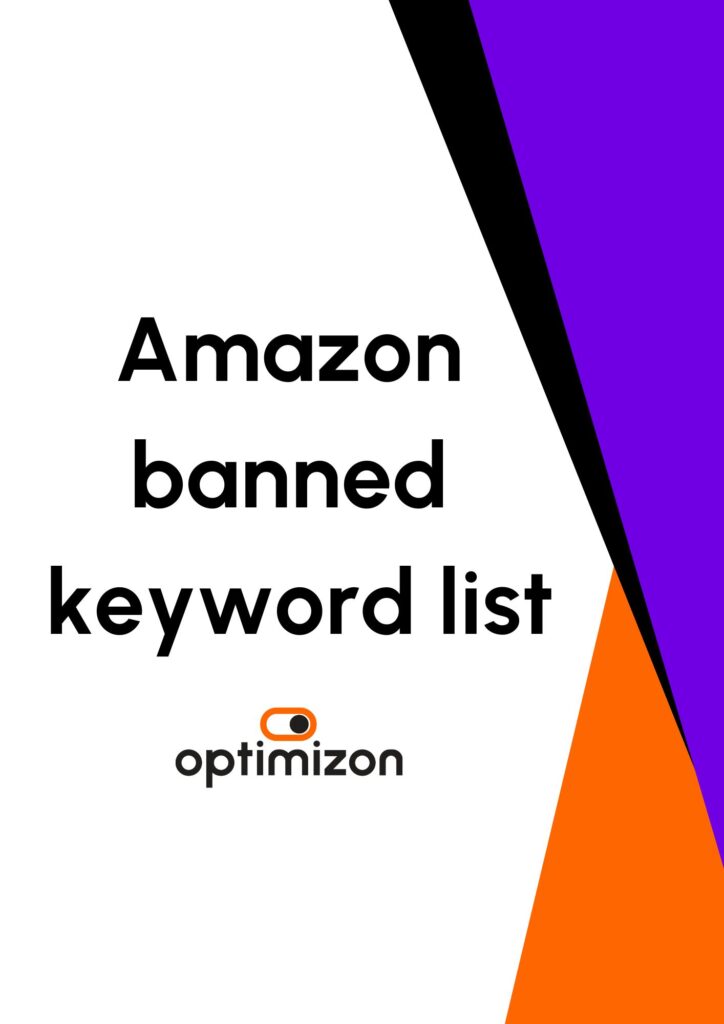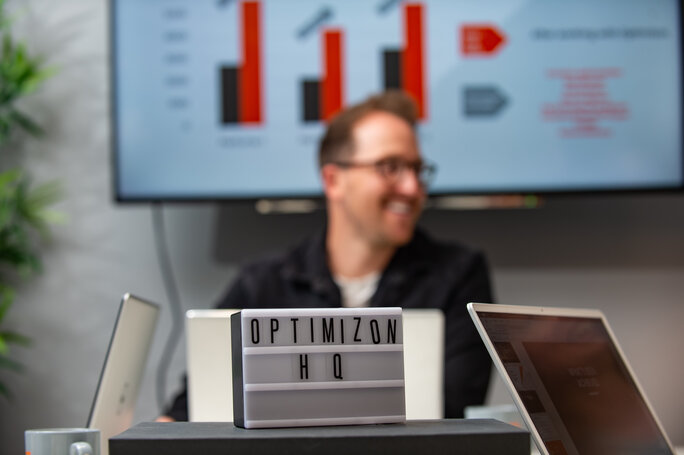Amazon Vendor vs Seller – Pros & Cons of selling 1P vs 3P
Amazon Vendor vs Seller: Optimizon CEO James Pitts-Drake sets out the Pros & Cons of selling on both 1P and 3P terms on Amazon, which is the most suitable for your business or brand, and how to become an Amazon Vendor.
If you’re a brand selling on Amazon this year, you’re likely to read more and more about 1P vs 3P. Otherwise known as First-Party or Third-Party, or sometimes Vendor vs Seller. In an Amazon sense, these terms refer to different models of selling for businesses and brands.
If you haven’t heard much about Amazon 1P, you will. Amazon is increasingly targeting brands for first-party selling.
There are pros and cons with both models. Here, we’ll talk you through the difference, so you can decide whether 1P or 3P is better for your business or brand. We’ll also cover how your business can become a First-Party seller.
What is a 1P Vendor?
If you are an 1P Vendor, it means that you sell your products directly to Amazon. Amazon then sells these products to customers. Your role is to fulfil PO (purchase orders) sent by Amazon and ship the product to Amazon.
Think of it as Amazon handling all of the e-shopfront hassle. Amazon takes control of setting the online price, plus all packaging and shipping, whilst you supply the wholesale goods.
What is a 3P Seller?
As a 3P Seller, you sell your products directly to customers via the Amazon marketplace. With this option, you have control over your pricing, marketing, advertising and shipping.
However, with 3P you can still opt for FBA (Fulfilment by Amazon). This means that the time-consuming logistics of shipping and returns can all be handled automatically by Amazon, even though you aren’t selling your products directly to Amazon.
What is the best option: 1P Vendor or 3P Seller?
In truth, there is no secret formula for selling on Amazon. Success in either option depends on multiple factors. Therefore, whether you opt for 1P or 3P depends on a host of variables. For instance, your products, your logistical set-up, marketing strategy, Amazon listing optimisation, history, and long-term strategy. Only you can ultimately decide what’s best for you and your brand (although, of course, we are happy to advise you!).
However, it can be helpful to be aware of the positives and negatives to Amazon Vendor vs Seller relationships. Why? Having this knowledge can help you to plan your business strategy long-term and also enable you to react more quickly should the option open-up for you to become a 1P Vendor.
A closer look at the pros & cons of Amazon Vendor vs Seller
Pros of a 1P Vendor relationship on Amazon
- With 1P, you have the credibility of the Amazon Prime Badge on your product, which is automatic for all first-party sellers. Offering Amazon Prime, along with two-day shipping, helps you to stand out from other sellers, drives sales and builds customer trust – hopefully creating repeat orders.
- With first-party, you receive PO (purchase orders) from Amazon on a regular basis. You don’t need to forecast your inventory.
- Another time saver is that Amazon handles customer service, all taxes and ASIN optimisation.
- The fees are more streamlined and simpler. Instead of having to pay multiple fees, for features like FBA, you are offered a consolidated fee structure.
Cons of a 1P Vendor relationship on Amazon
- Probably the biggest concern for anyone considering the 1P option is that you don’t have control over your prices. Amazon has the right to sell your products at the price it sees fit, which in turn could impact on your Minimum Advertising Price (MAP) and your Profit Margin (PM). This can be an issue if you are selling through other channels. You’ll have no power to maintain consistent prices across channels.
- 1P vendor (i.e. direct selling) to Amazon can also affect your PM because you’re selling your products at wholesale rather than retail prices.
- It’s also worth considering your cash flow forecasts because you will be paid less frequently – either at 30, 60- or 90-day intervals.
- Internet selling depends on traffic, this means that Amazon will wait to order your product until the listing has generated enough sales. Even then, Amazon may only order your product in small numbers, depending on your sales pattern.
- You also need to consider that being a 1P Vendor means you will have little control over your inventory overall. Amazon may suddenly stop ordering or drop you as an 1P Vendor altogether.
- Amazon has the right to change your visual listings and product descriptions without your approval. With 1P, you have less control over your brand than perhaps you would prefer as a seller.
- Furthermore, Amazon 1P won’t carry your brand’s entire product line. Only fast-moving products Amazon know will sell well will be stocked. The same principle applies to FBA. Amazon doesn’t want slow-movers sitting in their warehouse. As a result they charge high monthly and long-term storage fees to try to keep it that way.
Pros of being an Amazon 3P Seller
- With 3P you have greater flexibility in running your business, which can be a big attraction especially for new e-sellers. In short, this option means you retain control of your retail prices (both raising and lowering prices as you see fit) helping you to remain competitive on Amazon.
- You are free to edit your listings, create promotions and update product details, leading to a stronger brand presence than with 1P. You also don’t need Amazon’s approval to make any changes to your listings, meaning you retain full control of your brand.
- Retaining control of your brand can be important part of establishing your niche on Amazon and finding, and retaining, your customer base. The stability created with 3P is good for brand reputation, it helps to avoid price erosion and other issues that can occur when Amazon lowers 1P product prices below your MAP. Importantly, you can ensure that customers have a great, and consistent, brand experience.
- As a 3P seller, you choose how much inventory to list, again giving you more control than the 1P Vendor option. You have the freedom to stock up for promotions and new stock releases, which isn’t possible in an 1P relationship. You can also choose to share your inventory across marketplaces.
- As a 3P seller, you have access to detailed data and insights that aren’t available if you are selling on Amazon via 1P, again helping you to shape the business, and your brand, to demand.
Cons of being an Amazon 3P Seller
- Managing your own e-business on Amazon marketplace as a 3P Vendor takes time, energy and effort, certainly more than operating as an 1P Vendor.
- Operating costs for 3P Sellers are higher than those of 1P Vendors. You need to consider fees for things like FBA, referral fees and any professional monthly plan fees. On top of this is the time and effort required to fully optimise your Amazon campaigns to be competitive.
- You need to be knowledgeable about running your own advertising and promotional campaigns as well as optimising your listings for the platform. Or you need to outsource your Amazon activities at a cost.
- All customer service is your responsibility, even at the weekends, and you may have your account suspended if you don’t respond to customers within 24 hours.
- All tax matters are also your responsibility, as are all purchase orders and inventory logistics. It’s worth noting that Amazon doesn’t do inventory forecasts for 3P Sellers.
- If you don’t meet Amazon’s packaging, labelling and shipping guidelines your account maybe suspended.
How do I become a 1P Vendor on Amazon?
The most common method of selling on Amazon is 3P. Firstly, to become a 3P seller, you must set up a Seller Central Account. When you do this you will need to provide all the relevant verifications before your account is approved and you can begin listing and selling on Amazon.
The only way to become a 1P Vendor is via direct invitation from Amazon.
When and if that invitation arrives, your business or brand must decide if 1P is the right decision for the business. There is a tendency for businesses to jump at the opportunity to become a 1P Vendor, but it really might not be the correct direction.
Amazon 1P vs 3P – Final thoughts
The biggest differences between Amazon Vendor vs Seller really comes down to control. As an 1P Vendor you will be operating as a wholesale supplier to Amazon, which means you have less control but also less responsibility, and therefore less hassle.
With 3P, you have more control over your brand and pricing, but more overall responsibility. You will be dealing with all the day-to-day minutia of running an e-business including pricing, marketing, logistics and shipping.
If you have any more questions about 1P or 3P relationships with Amazon, don’t hesitate to reach out to the Optimizon team. As always, we’ll do our best to help.





